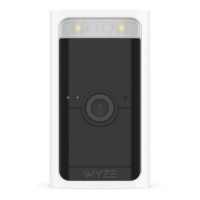During testing, the built-in solar panels compensated for any battery we used. It's even more impressive when you consider that the panels aren't much larger than a credit card. Still, the top-mounted panels mean you can't install the cameras in any spot.
You must account for overhangs and trees so they get enough sun. And installing on the north side of a house makes it almost impossible to align the panels with the sun. Fortunately, the cameras also work with the EufyCam Solar Panel (about $60), which boasts a 13-foot power cable.
As with many solar cameras we reviewed, you can't remove the battery, which means less charge over time. It also means getting out the ladder for a recharge if the battery dies.
Local storage is EufyCam 3's final strength. The base station includes a paltry 16 GB of built-in storage, which will last a month or so, but it's better than buying storage separately. Also, you can plop a storage drive—up to 16 TB—in the base station for as much storage as you'll ever need. Eufy has cloud storage, but we recommend getting a cheap hard drive instead.
The two-camera minimum pushes EufyCam 3 beyond small budgets. On a per-camera basis, you'll spend about $275, which isn't bad considering the Arlo Floodlight costs $250 (without a solar panel). We don't anticipate people snatching this up in bulk, but it's a great camera system nonetheless.
Learn more in our EufyCam 3 review.















